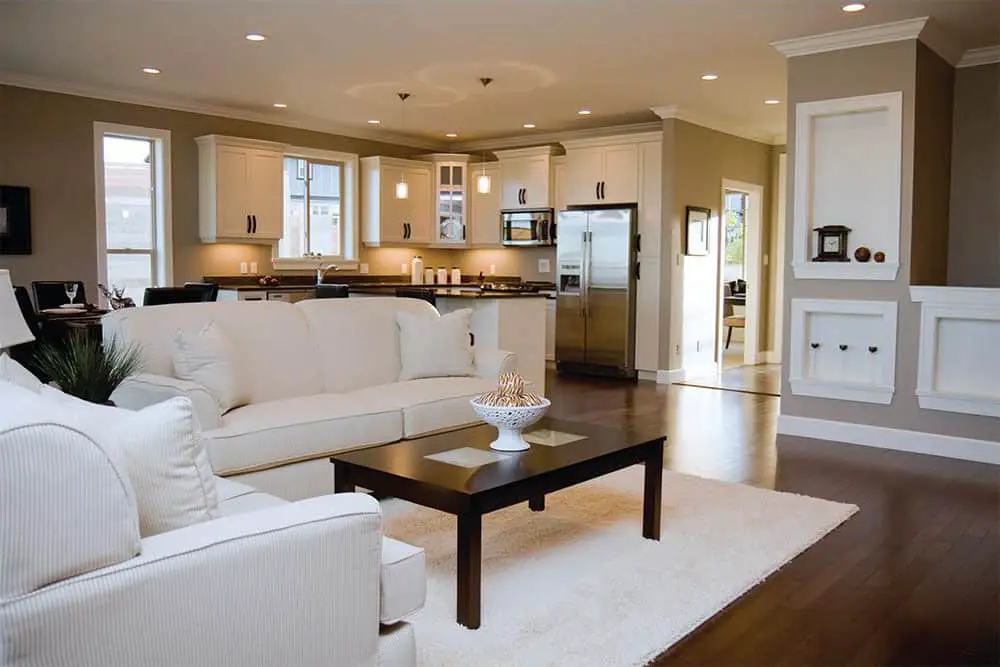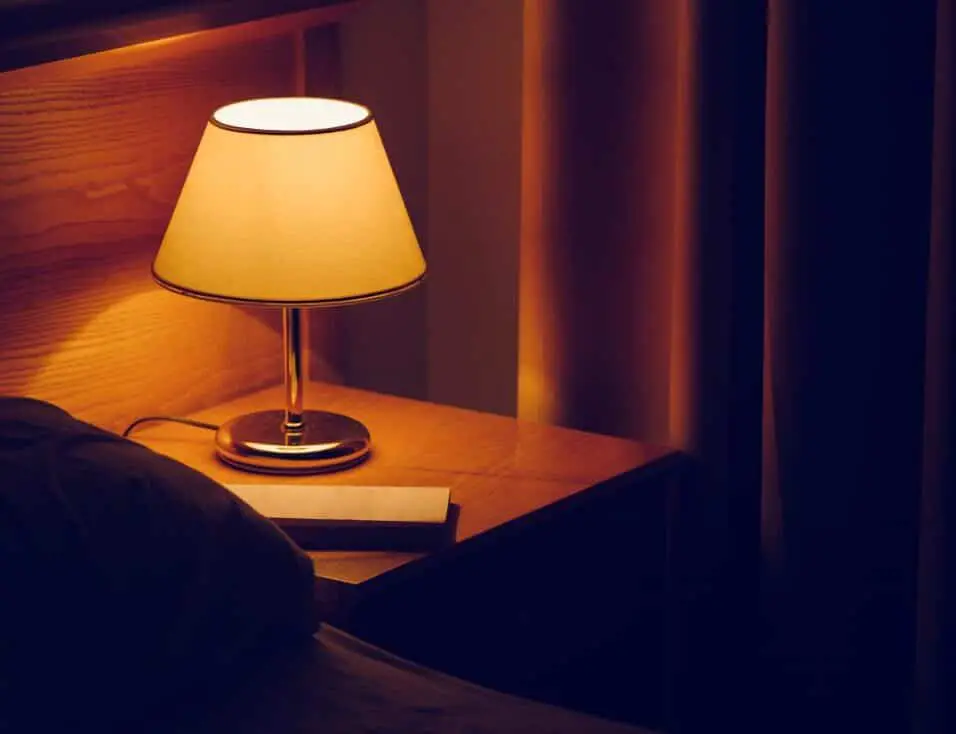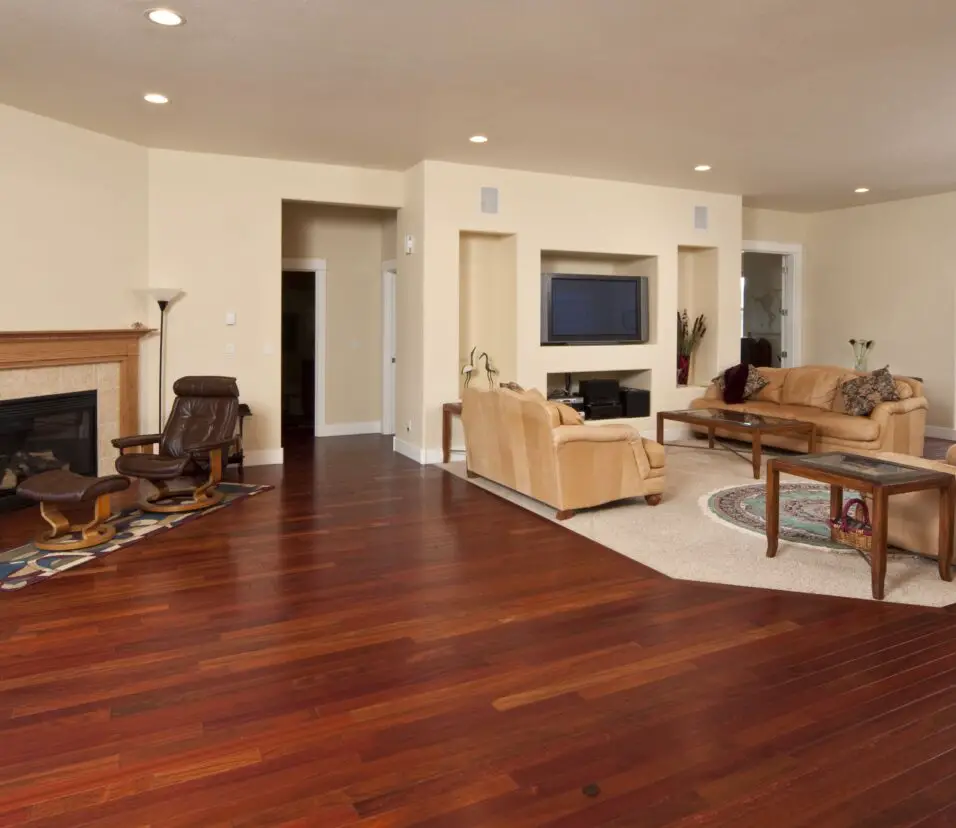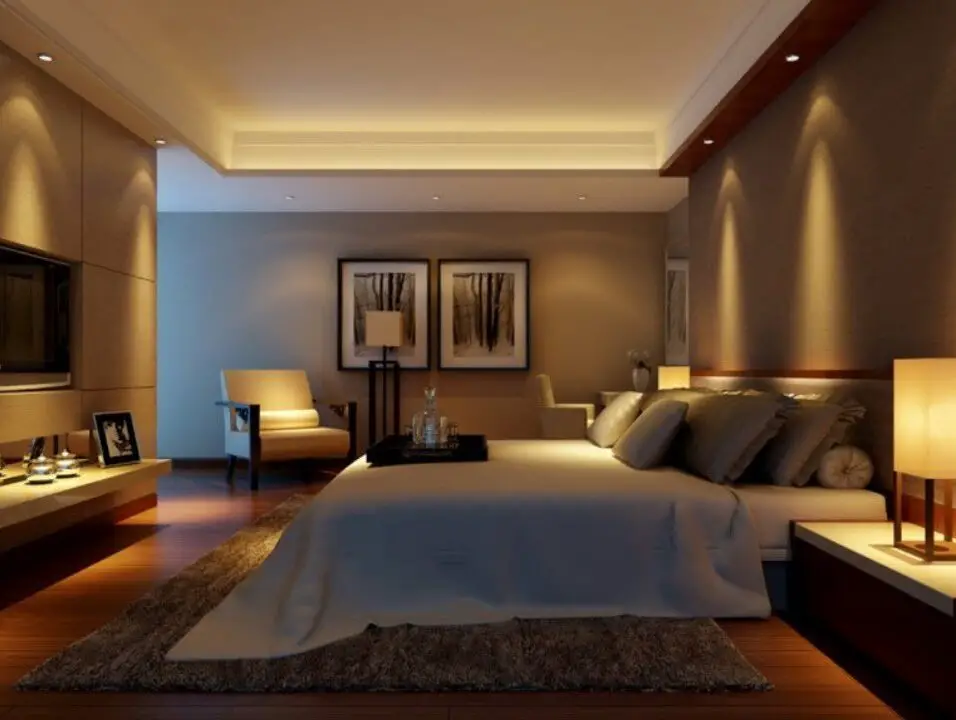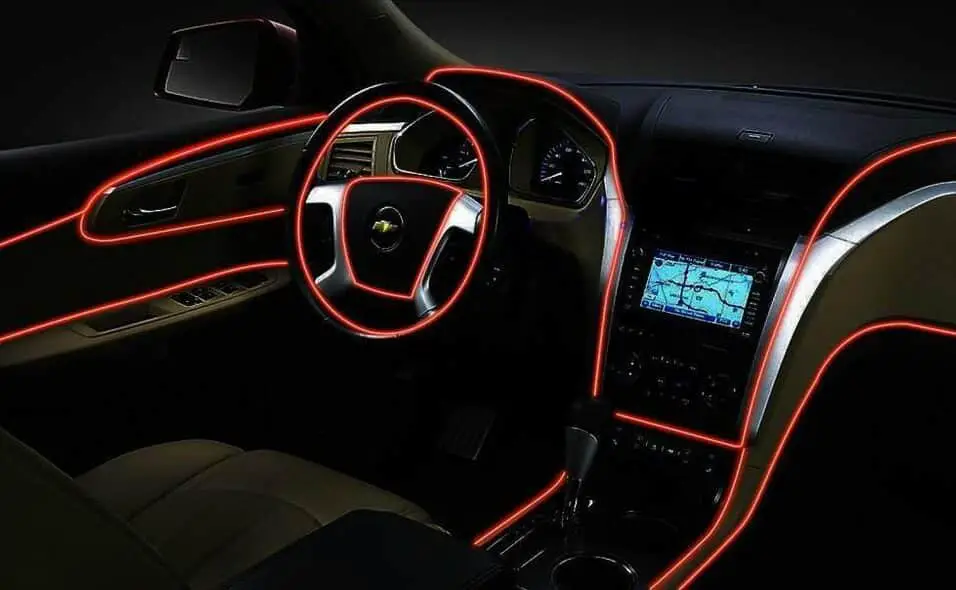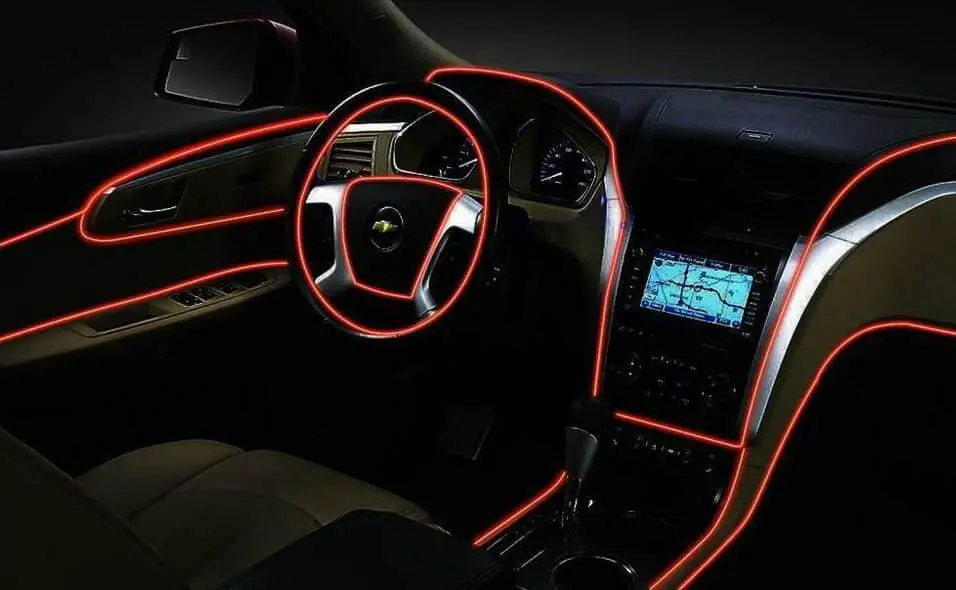How Many Recessed Lights In Living Room
Introduction
How Many Recessed Lights In Living Room: Choosing the right number of recessed lights for your living room is a key aspect of creating a well-lit and comfortable space. Recessed lighting, also known as can lights or downlights, provides a sleek and modern lighting solution that can enhance both the aesthetics and functionality of your living area. However, determining how many recessed lights you need involves considering various factors, such as the room’s size, layout, purpose, and personal preferences.
The living room is often the heart of the home, serving as a versatile space for relaxation, entertainment, and social gatherings. As such, it requires a thoughtful lighting plan that balances illumination with ambiance. Too few lights can leave the room feeling dim and unwelcoming, while too many can create a harsh and overly bright environment. Striking the right balance is essential to make your living room both visually appealing and functional.
In this exploration, we will delve into the considerations and guidelines for determining the appropriate number of recessed lights for your living room. We’ll explore factors like room size and layout, lighting design principles, and tips for achieving the perfect lighting scheme. Whether you’re renovating an existing space or planning the lighting for a new living room, this guide will help you make informed decisions to create a well-lit and inviting atmosphere that suits your unique needs and style preferences.
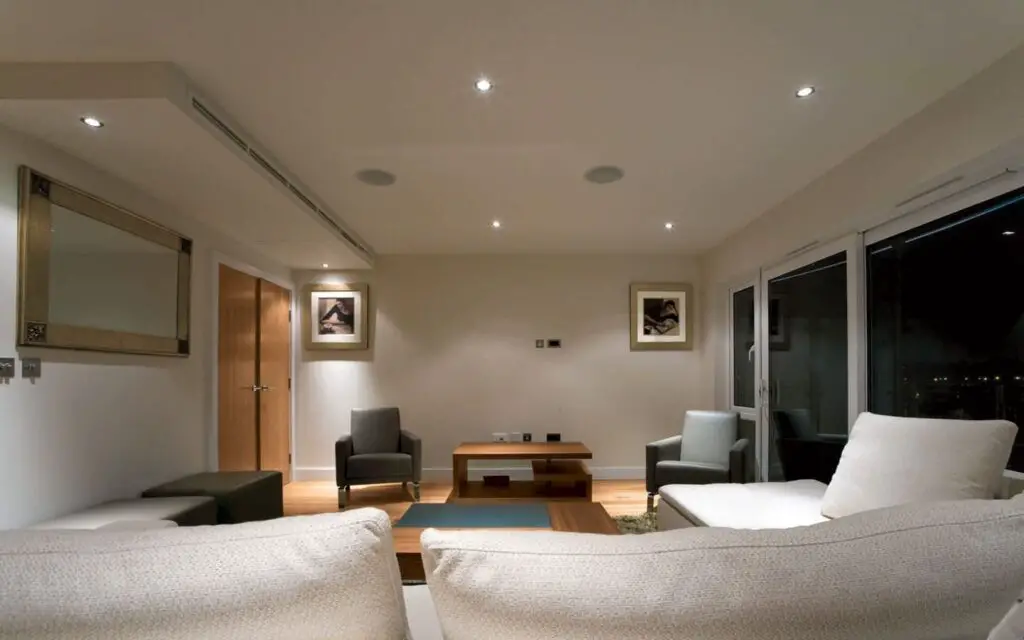
How many recessed lights for 500 sq ft?
Whatever new recessed lighting you add should work with your existing fixtures. Measure your room to see how many fixtures you will need. A common rule of thumb is that you use one recessed light for every 4 to 6 square feet of ceiling space. Doing so provides even, overall illumination.
The number of recessed lights you need for a 500-square-foot living room can vary depending on several factors, including the room’s layout, purpose, and your lighting preferences. However, as a general guideline, you can calculate the number of recessed lights based on the square footage of the room. For a 500-square-foot space, a common rule of thumb is to aim for approximately one recessed light per 25 square feet. This means you would need around 20 recessed lights for even and balanced illumination throughout the room.
Keep in mind that this is a starting point, and you may need to adjust the quantity based on specific factors. For example, if your living room has a high ceiling or unique architectural features, you might need more lights to ensure adequate coverage and prevent shadows. Additionally, consider the presence of other lighting sources, such as table lamps, floor lamps, or wall sconces, which can supplement the recessed lighting and influence your final decision.
What lighting is best for living room?
You should also pay attention to the color temperature of your bulbs—the ideal color range for living room bulbs is between 2700K and 3000K, often called soft white.
The best lighting for a living room is a combination of ambient, task, and accent lighting to create a versatile and inviting space:
Ambient Lighting: This provides general illumination for the entire room. Recessed lights, flush-mount fixtures, or chandeliers are excellent choices for ambient lighting. Consider dimmer switches to adjust brightness as needed.
Task Lighting: Task lighting is essential for specific activities such as reading, working, or playing games. Use floor lamps, table lamps, or pendant lights strategically to provide focused illumination where it’s needed.
Accent Lighting: Accent lighting highlights architectural features, artwork, or decorative elements in the room. Track lighting, wall sconces, or picture lights can be used for accent lighting.
Natural Light: Don’t overlook the benefits of natural light. Use curtains or blinds to control the amount of daylight entering the room and complement it with artificial lighting as needed.
The best lighting design for your living room should consider your lifestyle, the room’s layout, and your personal preferences. Using dimmer switches and smart lighting controls can also enhance flexibility and adaptability.
What are the rules for recessed lighting?
A good general rule for placement is to divide the height of the ceiling by two. The result is the amount of space to leave between each light. For example, recessed lighting spacing for a room with an 8-foot-high ceiling would be 4 feet between each light.
While there are no hard and fast rules for recessed lighting, several guidelines can help you make informed decisions:
Spacing: Typically, recessed lights should be spaced equidistant from each other. In general, aim for a spacing of about 5 to 6 feet apart for standard 8-foot ceilings. Adjust the spacing for taller ceilings.
Avoid Overcrowding: Avoid placing recessed lights too close together, as this can create a grid-like pattern on the ceiling. Overcrowding can also result in overly bright and harsh lighting.
Layered Lighting: Recessed lighting should be part of a layered lighting plan that includes ambient, task, and accent lighting. This ensures a well-balanced and versatile lighting scheme.
Dimmers: Install dimmer switches to control the brightness of recessed lights. This allows you to adjust the lighting to suit various activities and moods.
Consider Bulb Type: Choose the right type of light bulbs (e.g., LED, incandescent, or halogen) based on your energy efficiency goals and color temperature preferences.
Professional Installation: For precise and safe installation, consider hiring a professional electrician.
Should you put recessed lights over TV?
Recessed lighting above or ambient lighting behind the screen will increase the level of light in the room, and of course there will be no glare on the screen. There are specific bias light fixtures for home entertainment areas, but you can also use your current home lighting to create the same effect.
Whether to install recessed lights over a TV depends on your preferences and the specific layout of your living room. Here are some considerations:
Glare: Placing recessed lights directly above a TV can create glare on the screen, which can be distracting and reduce viewing comfort. To avoid this, consider installing lights on the sides of the TV or using adjustable fixtures to direct light away from the screen.
Ambiance: Recessed lights around the TV can enhance the overall ambiance of the room and provide indirect lighting. This can be useful for creating a warm and inviting atmosphere, especially when the TV is not in use.
Task Lighting: If you use the area around the TV for reading, working, or other activities, recessed lights can serve as task lighting. Position them strategically to provide adequate illumination for these tasks.
Dimmers: Regardless of their placement, use dimmer switches to control the brightness of recessed lights near the TV. This allows you to adjust the lighting to your preferences and reduce glare when watching TV.
In summary, the decision to install recessed lights over a TV should consider factors such as glare, ambiance, task lighting needs, and personal preferences. It’s essential to strike a balance that complements your viewing experience and overall room design.
What is the maximum distance between recessed lights?
If a 6-inch light has a spacing criteria of 1.5 and the ceiling height is 8 feet, the maximum space between each light should be 12 feet. This formula is critical for lighting a space because if the lights are too far apart, they will look like spotlights with big shadows between each other.
The maximum distance between recessed lights, also known as the spacing, depends on several factors, including the type of recessed light fixture, the ceiling height, and the desired lighting level. Here are some general guidelines to consider:
Ceiling Height
For standard 8-foot ceilings, a common guideline is to space recessed lights approximately 5 to 6 feet apart. Taller ceilings may require slightly wider spacing to ensure even illumination.
Fixture Type
The type of recessed light fixture can impact spacing. LED recessed lights often provide more even and wide-angle illumination, allowing for wider spacing compared to older incandescent or halogen fixtures.
Lighting Goals
Consider your lighting goals when determining spacing. If you desire brighter and more even illumination, you may need to reduce the spacing between lights. Conversely, for a softer and more ambient lighting effect, you can space lights farther apart.
Dimmers
Installing dimmer switches can give you greater flexibility in adjusting the brightness of recessed lights. This can compensate for wider spacing while still achieving the desired lighting levels.
Room Layout
The layout and function of the room play a role in determining spacing. For example, areas where task lighting is essential, such as kitchen countertops or bathroom vanities, may require closer spacing.
It’s important to note that these are general guidelines, and the ideal spacing can vary based on individual preferences and specific room conditions. To achieve the best results, consider consulting with a lighting professional who can assess your room’s unique requirements and provide a lighting plan tailored to your needs.
How many recessed lights can I put on one circuit?
You should never load a circuit to more than 80% of its rating. Using the 80% rule (remember, this is a rule and the code), you can load 12 amps on a 15 amp breaker. This means that using the scenario above you could put 160 recessed lights on one circuit using LED bulbs.
The number of recessed lights you can put on one circuit depends on several factors, including the wattage of the light fixtures, the capacity of the circuit, and local electrical codes. Here are some considerations:
Circuit Capacity
The circuit capacity is determined by the electrical panel and the circuit breaker or fuse size. Each circuit has a maximum load capacity measured in amperes (amps). You should not exceed this capacity to prevent overloading the circuit.
Wattage of Fixtures:
Calculate the total wattage of the recessed light fixtures you plan to install on the circuit. For example, if each fixture uses 10 watts, and you want to install 10 fixtures, the total wattage would be 100 watts.
Voltage:
Ensure that the voltage of the fixtures matches the voltage of the circuit. In the United States, most residential circuits are 120 volts.
Local Codes:
Local electrical codes may have specific requirements regarding the number of fixtures allowed on a circuit. Be sure to check your local codes and adhere to their guidelines.
To calculate the number of recessed lights you can put on one circuit, divide the circuit’s total wattage capacity by the wattage of each fixture. For example, if you have a 15-amp circuit with a capacity of 1,800 watts (15 amps x 120 volts) and each fixture uses 10 watts, you could theoretically install up to 180 fixtures (1,800 watts ÷ 10 watts/fixture) on that circuit. However, it’s important to leave some margin for safety and avoid overloading the circuit.
Consulting with a licensed electrician is advisable when planning your recessed lighting installation. They can help ensure that your installation complies with local electrical codes, is safely wired, and operates efficiently.
How do I choose recessed lighting size?
The best way to choose recessed lighting can sizes is to look at the architectural features of the space. For instance, the amount of space available to you in the ceiling where the light will be placed determines which size may be appropriate for your space.
Choosing the right size for recessed lighting involves considering the following factors:
Ceiling Height
Taller ceilings may require larger recessed lights to provide adequate illumination. For standard 8-foot ceilings, 4-inch or 6-inch recessed lights are common. For higher ceilings, 6-inch or larger fixtures may be preferred.
Room Size
Larger rooms may benefit from larger recessed lights or multiple fixtures to achieve even lighting. Smaller rooms may require smaller fixtures or fewer fixtures to avoid overwhelming the space.
Light Output
Consider the desired brightness or light output for the room. Larger fixtures generally produce more light, so if you need brighter illumination, opt for larger sizes.
Aesthetic Preferences
The size of recessed lights can impact the room’s aesthetics. Smaller fixtures can appear more discreet and blend into the ceiling, while larger fixtures can make a design statement.
Trim Style
Different trim styles are available for recessed lights, and the size of the trim can influence the fixture’s appearance. Be sure to select a trim style that complements your design preferences.
Spacing
The spacing between recessed lights can affect the overall lighting quality. Smaller fixtures may require closer spacing, while larger fixtures may allow for wider spacing.
Ceiling Conditions
Consider any obstructions or conditions in the ceiling, such as beams or ductwork, that may impact the choice of fixture size. Ensure that there is enough space and clearance for the chosen fixtures.
Energy Efficiency
Smaller LED recessed lights are often more energy-efficient than larger fixtures. If energy conservation is a priority, consider the wattage and lumens of the fixtures.
In summary, choosing the right recessed lighting size involves a balance between room size, ceiling height, desired light output, aesthetics, and practical considerations. Careful planning and consultation with a lighting professional can help you make the best choice for your specific lighting needs and design preferences.
What is the average size of recessed lights?
The most common size recessed light is 6-inch. The standard ceiling cut-out size for 6-inch housings is 6-3/8 inches, and the inside diameter of the housing (trim removed) measures approximately 6-inches.
The average size of recessed lights typically falls within the range of 4 inches to 6 inches in diameter for residential applications. These sizes are commonly used for most standard ceiling heights and room sizes. Here’s a breakdown of these sizes:
4-Inch Recessed Lights: These smaller fixtures are well-suited for areas with limited ceiling space or where a more discreet lighting solution is desired. They are often used in kitchens, hallways, and bathrooms.
6-Inch Recessed Lights: 6-inch recessed lights are versatile and widely used in residential settings. They provide a balanced combination of light output and aesthetics, making them suitable for living rooms, bedrooms, dining rooms, and other spaces.
While 4-inch and 6-inch fixtures are the most common sizes, larger sizes, such as 8-inch or 10-inch, are available and may be used for rooms with higher ceilings or larger areas that require more substantial lighting. Additionally, specialty sizes and shapes, including square and rectangular fixtures, are available to accommodate various design preferences and lighting needs.
When selecting the size of recessed lights, consider factors such as the room’s dimensions, ceiling height, desired light output, and aesthetic preferences. It’s also important to ensure that the chosen fixtures align with the overall design and function of the space.
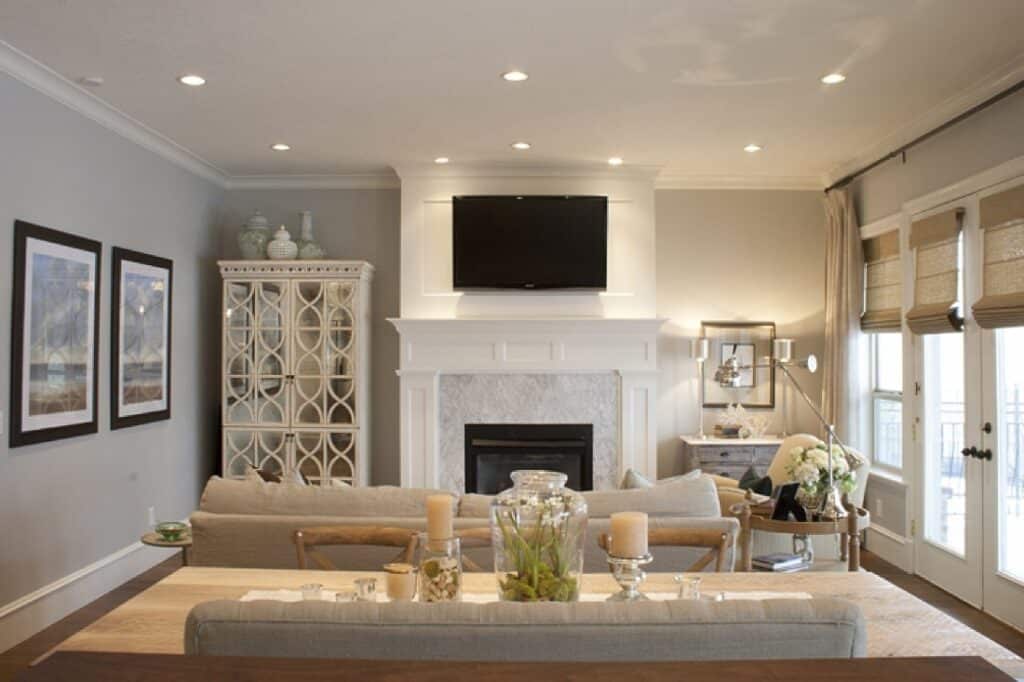
Conclusion
Determining the ideal number of recessed lights for your living room is a crucial step in creating a well-balanced and visually appealing space. It involves careful consideration of various factors, including the room’s size, layout, purpose, and your personal preferences.
The living room is a versatile area that serves different functions, from relaxation and family gatherings to reading or watching TV. As such, the lighting design should cater to these diverse needs while creating an inviting ambiance. Striking the right balance between too few and too many recessed lights is essential.
To find the right number of recessed lights, it’s essential to adhere to a few fundamental principles:
Room Size: Larger living rooms typically require many recessed lights to achieve even illumination. Consider the room’s dimensions when determining spacing and quantity.
Task Lighting: Integrate task-specific lighting where needed, such as above reading nooks, artwork, or entertainment centers. This enhances functionality while adding visual interest.
Lighting Zones: Divide the living room into lighting zones to control brightness in different areas independently. This allows you to create various moods and adjust lighting based on activities.
Dimmers and Controls: Incorporate dimmer switches and smart lighting controls to fine-tune the brightness according to the situation, enhancing flexibility and energy efficiency.
Aesthetics: The placement and aesthetics of recessed lights should complement your living room’s design. Consider the fixture style, trim options, and color temperature to ensure they align with your décor.
Ultimately, the goal is to achieve a harmonious lighting scheme that balances functionality with aesthetics, creating an inviting and comfortable living room environment. By carefully assessing your living room’s unique requirements and following these guidelines, you can determine the right number of recessed lights that will illuminate your space in a way that suits your needs and personal style.



